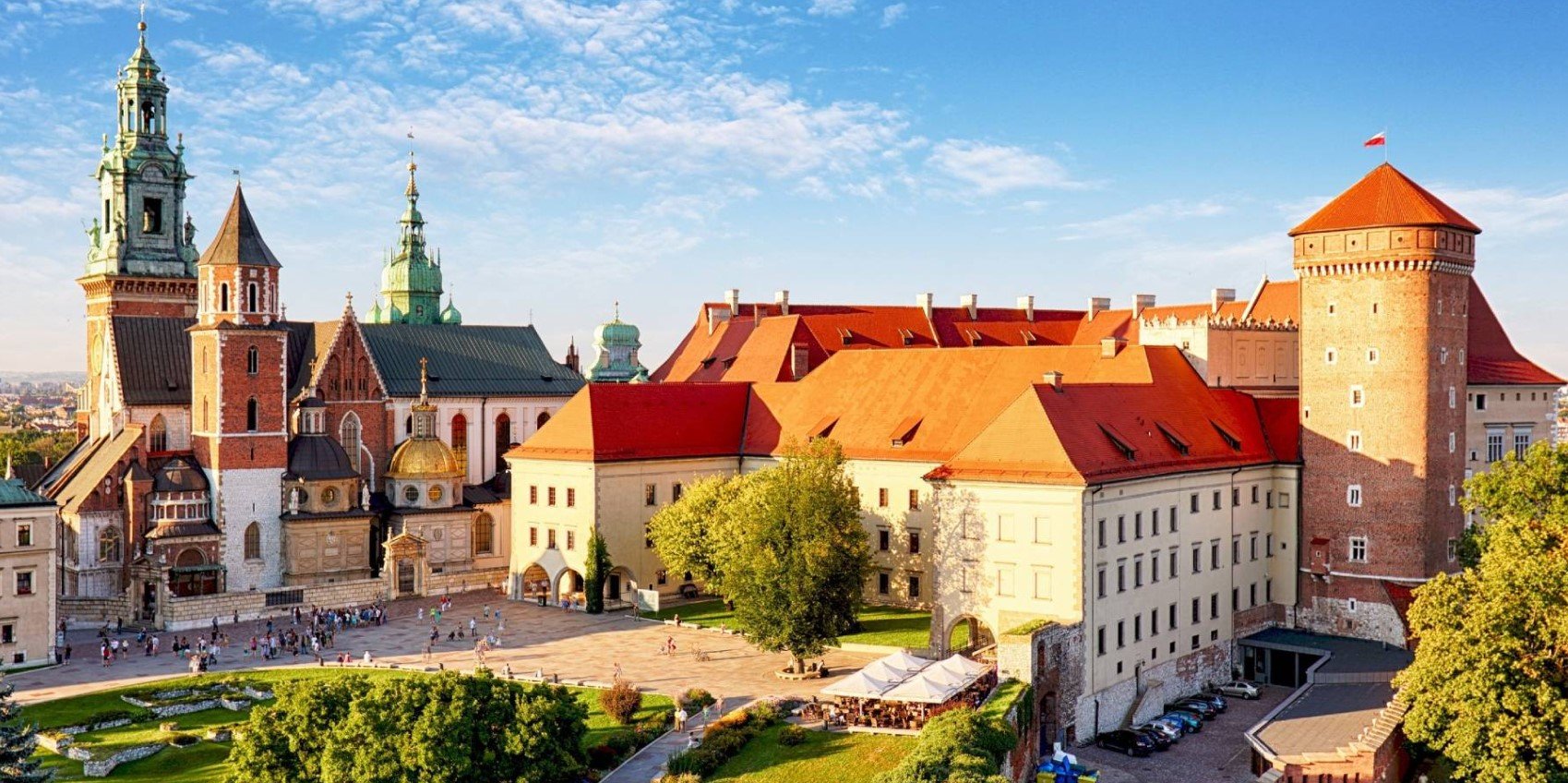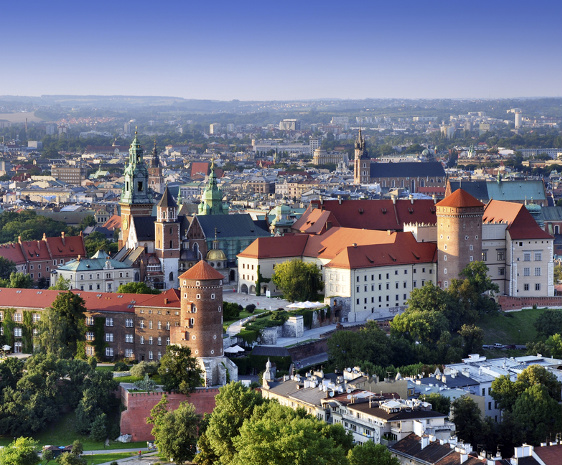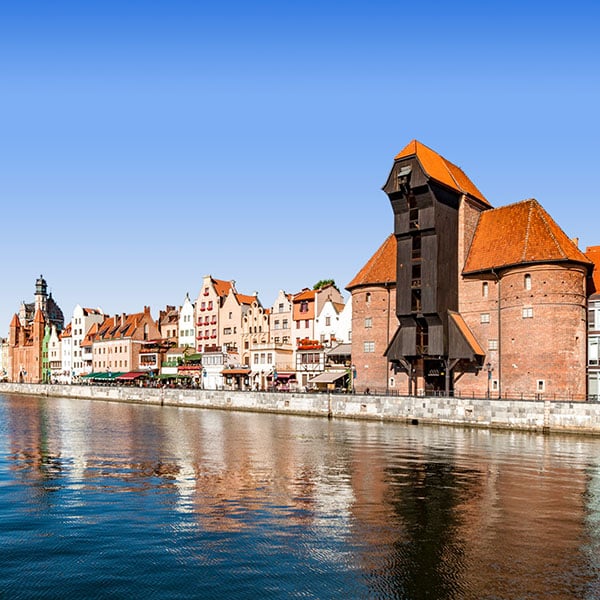
In the heart of Europe lies a country that often flies under the radar of mainstream tourism, yet offers a tapestry of experiences as rich and vibrant as any of its Western counterparts. Poland, a nation forged in resilience and steeped in a millennium of dramatic history, is a land of medieval castles, hauntingly beautiful landscapes, and dynamic, modern cities. Best of all, it remains one of Europe’s most affordable destinations, a place where your travel budget can stretch further than you ever imagined.
The key to unlocking this incredible country is often the first and most significant expense: the flight. This guide will not only show you how to find those elusive cheap flights to Poland but will also equip you with everything you need to know to plan an unforgettable journey, from its must-see attractions and poignant history to practical tips on accommodation, transport, and the best time to visit.
The Quest for Cheap Flights: Unlocking Poland’s Gateway

Related Articles about Poland on a Budget: Your Ultimate Guide to Cheap Flights and Unforgettable Adventures:
- Iceland: A Land of Fire and Ice – Your Ultimate Guide to Adventure
- Cracking the Code: Affordable Flights to Japan & Unveiling the Land of the Rising Sun on a Budget
- Osaka: A Journey to Japan’s Dynamic Culinary and Cultural Heart
- Paris: A Timeless Guide to the City of Lights
- Bulgaria: A Land of Ancient Wonders and Untamed Beauty – Your Ultimate Travel Guide
The rise of budget airlines has transformed European travel, and Poland has been a major beneficiary. With a network of modern airports across the country, getting there for less has never been easier.
Key Airports and Airlines:
Your search for affordable airfare will likely lead you to one of Poland’s major international airports, each serving as a hub for low-cost carriers:
- Warsaw (WAW & WMI): The capital has two airports. Warsaw Chopin (WAW) is the main international hub served by legacy carriers and some budget airlines like Wizz Air. Warsaw Modlin (WMI) is a dedicated hub for Ryanair, often offering the cheapest fares, though it’s located further from the city center.
- Kraków (KRK): As Poland’s top tourist destination, Kraków’s John Paul II International Airport is well-served by Ryanair, Wizz Air, and EasyJet, connecting it to dozens of European cities.
- Gdańsk (GDN): The gateway to Poland’s beautiful Baltic coast, Gdańsk Lech Wałęsa Airport is a major base for Wizz Air and Ryanair.
- Wrocław (WRO) & Katowice (KTW): These airports in the Silesia region are also significant hubs for low-cost travel, providing excellent entry points for exploring southern Poland.

Strategies for Finding the Best Deals:
- Be Flexible with Your Dates: This is the golden rule of budget travel. Flying on a Tuesday or Wednesday is almost always cheaper than on a Friday or Sunday. Use flight comparison tools like Skyscanner or Google Flights and select the "whole month" or "flexible dates" option to visually identify the cheapest days to fly.
- Book in the Sweet Spot: While last-minute deals can occasionally pop up, the best prices are typically found 6-8 weeks in advance for short-haul European flights. Booking too far ahead or too late often results in higher fares.
- Travel in the Shoulder Seasons: April-May and September-October offer the perfect blend of pleasant weather, fewer crowds, and, most importantly, lower flight and accommodation costs compared to the peak summer months of June through August.
- Consider Different Airports: If you plan to visit multiple cities, check the prices to all major Polish airports. It might be cheaper to fly into Katowice and take a one-hour bus to Kraków, or fly into Gdańsk and start your journey from the north.
- Pack Light: Budget airlines make their money on extras. Their cheapest fares include only a small personal item that fits under the seat in front of you. If you can master the art of minimalist packing, you can save a significant amount on baggage fees.
Once You Land: A Journey Through Poland’s Soul
With your cheap flight secured, the real adventure begins. Poland’s cities are a captivating mix of meticulously restored history and forward-thinking energy.
Kraków: The Royal Heart
Undoubtedly Poland’s cultural capital, Kraków was miraculously spared the widespread destruction of World War II. Its UNESCO-listed Old Town is a fairytale brought to life. The vast Main Market Square (Rynek Główny) is one of the largest medieval squares in Europe, dominated by the magnificent St. Mary’s Basilica and the Renaissance-era Cloth Hall. A short walk leads to Wawel Hill, where the Royal Castle and Cathedral stand as symbols of Poland’s former glory. Don’t miss the historic Jewish Quarter, Kazimierz, a bohemian district of synagogues, quirky cafes, and poignant history.
From Kraków, two essential day trips await: the Auschwitz-Birkenau Memorial and Museum, a sobering and necessary visit to understand the depths of 20th-century history, and the Wieliczka Salt Mine, a subterranean world of chapels, chandeliers, and statues all carved from rock salt.
Warsaw: The Phoenix City
Poland’s capital is a testament to the nation’s unbreakable spirit. Razed to the ground during WWII, its Old Town was painstakingly rebuilt, brick by brick, using pre-war paintings as a guide—a feat that earned it UNESCO World Heritage status. Beyond the charming Old Town, Warsaw is a bustling, modern metropolis. Walk the Royal Route, visit the powerful Warsaw Uprising Museum to understand the city’s tragic and heroic past, and take in the panoramic views from the top of the controversial but iconic Palace of Culture and Science, a "gift" from Stalin.
Gdańsk: The Baltic Jewel
On the Baltic coast, the port city of Gdańsk tells a different story. As a key member of the Hanseatic League, its wealth is reflected in the ornate, colorful facades of the merchant houses lining the Long Market. The city is a maritime dream, with Neptune’s Fountain and the medieval crane (Żuraw) as its icons. Gdańsk also holds a pivotal place in modern history; it was here, in the shipyards, that Lech Wałęsa’s Solidarity movement began, ultimately leading to the downfall of communism in Eastern Europe.
Wrocław: The City of Gnomes
Often called the "Venice of Poland" for its 100+ bridges spanning the Oder River, Wrocław is a city of pure charm. Its Market Square rivals Kraków’s in beauty, and the gothic Old Town Hall is a masterpiece. The city’s most unique feature, however, is the hundreds of tiny bronze gnomes (krasnale) scattered across its streets. What started as a political statement against the communist regime has become a delightful city-wide scavenger hunt for visitors.
Echoes of History: Understanding Poland’s Resilience
To truly appreciate Poland, one must understand its history. This is a nation that experienced a Golden Age as the vast Polish-Lithuanian Commonwealth, a powerhouse of culture and tolerance. It was then literally wiped off the map for 123 years, partitioned between Russia, Prussia, and Austria.
The 20th century brought unimaginable suffering: invasion by both Nazi Germany and the Soviet Union in 1939, the horrors of the Holocaust on its soil, and the systematic destruction of its capital. Following the war, it endured decades of oppressive communist rule. Yet, through it all, the Polish spirit of resistance never died. This history is not hidden away in museums; it is palpable in the rebuilt streets of Warsaw, commemorated at solemn memorials, and celebrated in the vibrant freedom of its modern cities.
The Savvy Traveler’s Toolkit: Practical Tips
- Currency: Poland uses the Polish Złoty (PLN), not the Euro. This is a key reason for its affordability. Your money will go much further here. Avoid airport currency exchanges; instead, withdraw cash from an ATM (bankomat) or use a "kantor" (exchange bureau) in the city center for the best rates.
- Language: Polish is a Slavic language and can be challenging for English speakers. However, in cities and tourist areas, English is widely spoken, especially by the younger generation. Learning a few basic phrases will be greatly appreciated:
- Dzień dobry (jeyn dob-ry) – Good day
- Dziękuję (jen-koo-yeh) – Thank you
- Proszę (pro-sheh) – Please / You’re welcome
- Na zdrowie! (na zdro-vyeh) – Cheers!
- Food and Drink on a Budget: Polish cuisine is hearty, delicious, and incredibly cheap. Don’t leave without trying pierogi (dumplings), żurek (sour rye soup), and bigos (hunter’s stew). For the ultimate budget meal, visit a bar mleczny (milk bar). These Soviet-era cafeterias, now subsidized by the state, serve traditional Polish food for just a few dollars.
Laying Your Head: Accommodation for Every Budget
Poland offers a fantastic range of accommodation that won’t break the bank.
- Hostels: Polish hostels are among the best in Europe—clean, modern, and sociable, with prices often starting as low as $15-20 per night for a dorm bed.
- Apartments: Websites like Booking.com and Airbnb offer a vast selection of private apartments. For the price of a budget hotel room in Western Europe, you can often get a full studio or one-bedroom apartment in the heart of a Polish city, providing excellent value for couples and families.
- Budget Hotels: Chains like Ibis and local guesthouses (pensjonat) provide comfortable and affordable private rooms. Even 3- and 4-star hotels are significantly cheaper than their Western European equivalents.
Getting Around: Navigating Poland’s Landscapes
Poland’s internal transport system is efficient and affordable, making it easy to explore multiple destinations.
- Trains: The national rail service, PKP Intercity, is the best way to travel between major cities. The trains are modern, comfortable, and punctual. Book tickets in advance on the official PKP website for significant discounts.
- Buses: Companies like FlixBus offer a cheaper, albeit sometimes slower, alternative to trains. They are particularly useful for reaching smaller towns not served by major rail lines.
- City Transport: Major cities have excellent public transport networks of trams and buses. A single ticket usually costs around $1. You can buy tickets from machines at stops (most have an English option) or via apps like Jakdojade, which is also an indispensable journey planner. Remember to validate your ticket in the small box on board to avoid a fine.
Timing is Everything: The Best Time to Visit
- Peak Season (June-August): The weather is warmest, and the days are long. This is a great time for outdoor activities, but it’s also when cities are most crowded and prices are at their highest.
- Shoulder Seasons (April-May & September-October): This is the sweet spot. The weather is generally mild and pleasant, the tourist crowds have thinned, and flights and accommodation are cheaper. September, in particular, can be beautiful, with the "Polish Golden Autumn" (Złota Polska Jesień) casting a magical light on the country.
- Winter (November-March): Prepare for cold weather and snow. However, this is a magical time to visit for the enchanting Christmas markets in cities like Kraków and Wrocław. It’s also the cheapest time to travel, with the fewest tourists.
A Rich Reward Awaits
Poland is a country that rewards the curious traveler. It offers the grand history of Europe’s great capitals, the poignant lessons of the 20th century, and the infectious energy of a nation confidently striding into the future. It’s a destination where you can wander through a medieval castle in the morning, reflect at a world-changing historical site in the afternoon, and enjoy a craft beer in a trendy, bohemian bar in the evening—all without emptying your wallet.
So, start searching for those flights. Be flexible, be savvy, and prepare to be captivated. An affordable, profound, and unforgettable Polish adventure is just a cheap flight away.





